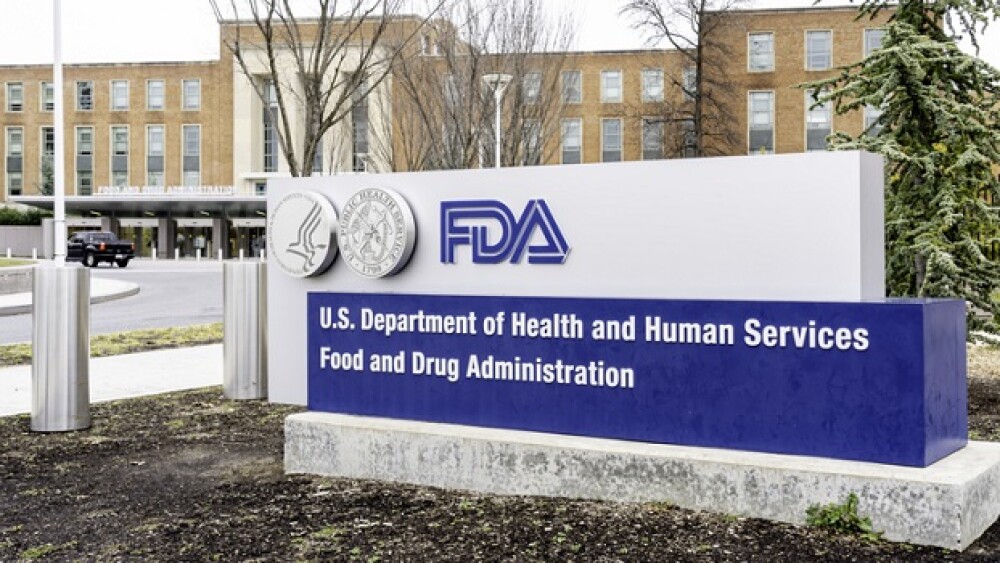Despite the lack of a randomized clinical trial to support eflornithine’s efficacy, the regulator approved US WorldMeds’ oral maintenance treatment for high-risk neuroblastoma in adults and children.
Pictured: FDA sign outside its headquarters/iStock, JHVEPhoto
The FDA on Wednesday approved US WorldMeds’ oral drug eflornithine for the maintenance therapy of high-risk neuroblastoma. Eflornithine, which will now carry the brand name Iwilfin, is indicated to reduce the risk of relapse in adult and pediatric patients.
Wednesday’s approval, announced by the company and FDA on Thursday, makes Iwilfin the first authorized oral maintenance therapy for this indication, according to the announcements. The drug is indicated to decrease the risk of relapse in adults or children with high-risk neuroblastoma (HRNB) who had shown at least a partial response to multiagent, multimodality treatment—including anti-GD2 immunotherapy.
Iwilfin is also the first approved therapy meant to reduce the risk of relapse in children with HRNB, according to the FDA’s announcement.
US WorldMeds CEO Breck Jones in a statement called Iwilfin a “new and much-needed treatment option” for HRNB, particularly for pediatric patients.
“The goal for treating these young patients is to prevent relapse, and advancing therapeutic options is critical to this mission,” Jones said. “Iwilfin offers new hope and improved outcomes for these vulnerable children.”
Iwilfin is an orally available inhibitor of ornithine decarboxylase, which is a key enzyme involved in neoplastic transformation. According to the drug’s label, using Iwilfin led to a drop in expression levels of two oncogenic drivers—MYCN and LIN28B—which in turn could promote cell aging and prevent cancer development.
The FDA’s approval is backed by data from a single-arm, externally controlled study of children with HRBN, who had initially been treated with standard regimens, including immunotherapy. Results showed an 84% event-free survival at four years compared with 73% in an external control arm.
Overall survival after Iwilfin treatment was 96% at four years versus 84% in external controls. These data indicate that Iwilfin cut the risk of relapse by 52% and the risk of death by 68%, according to US WorldMeds.
In October 2023, the FDA’s Oncologic Drugs Advisory Committee was split on whether to recommend elfornithine for approval but eventually voted 14-6 in favor of US WorldMeds—despite the lack of a randomized clinical trial to support the drug’s efficacy.
At the time, adcomm panelists said that elfornithine was of a lower toxicity than the drugs that they usually discuss, while also noting that its efficacy in the externally controlled study might be overstated given the lack of randomization.
Adcomm members also cautioned that the drug’s approval without a randomized trial might lead to a slippery slope in what the FDA requires of manufacturers for future applications.
Iwilfin’s label does not come with a boxed warning but carries precautions against myelosuppression, hepatotoxicity, hearing loss and embryo-fetal toxicity.
Tristan Manalac is an independent science writer based in Metro Manila, Philippines. He can be reached at tristan@tristanmanalac.com or tristan.manalac@biospace.com.






